As the sun rose over the Thar Desert of Rajasthan, I was awakened by the gentle mooing of the cattle that grazed nearby. I stepped out onto the terrace of our field research base in the midst of the desert landscape when a cool breeze and a pair of toads leaping out of the water tank greeted me good morning. The weather here is usually pleasant at this time of the day, as the temperature drops significantly through the night. Soon, my colleague, Pankaj, joined me. He is in charge of engaging with the local communities, so we jokingly call him the CEO or the Community Engagement Officer.
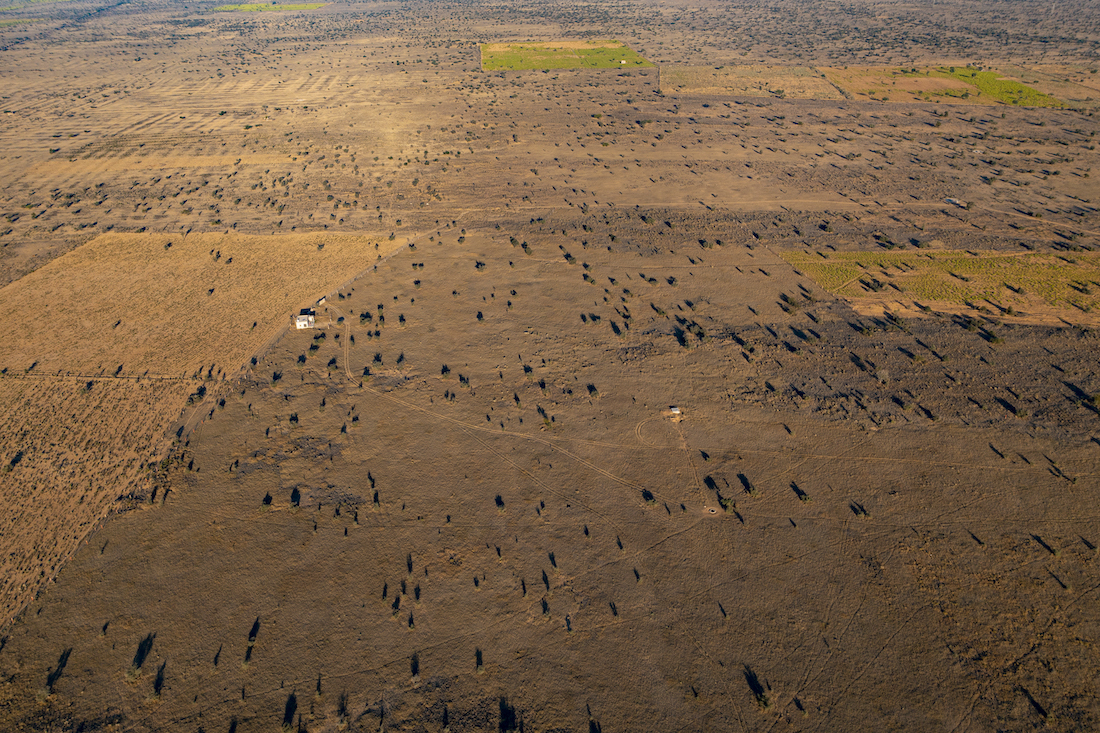
As we sat down to enjoy a warm cup of freshly brewed tea and discuss our plans for the day, Pankaj suddenly motioned me to be quiet. He pointed to a large bird that was walking a few hundred metres from us. It was a great Indian bustard (GIB), or godawan, as the locals call it. This magnificent, Critically Endangered bird gets its species name, Ardeotis nigriceps, from its black head. We quickly grabbed our equipment and headed towards the bird to study it in greater detail. We positioned ourselves around 150 m away under the shade of a khejri tree, with the ber bushes in front acting as our cover. The faint checkered pattern on the neck affirmed that it was a female. The bird was preening itself but was also vigilant to its surroundings.
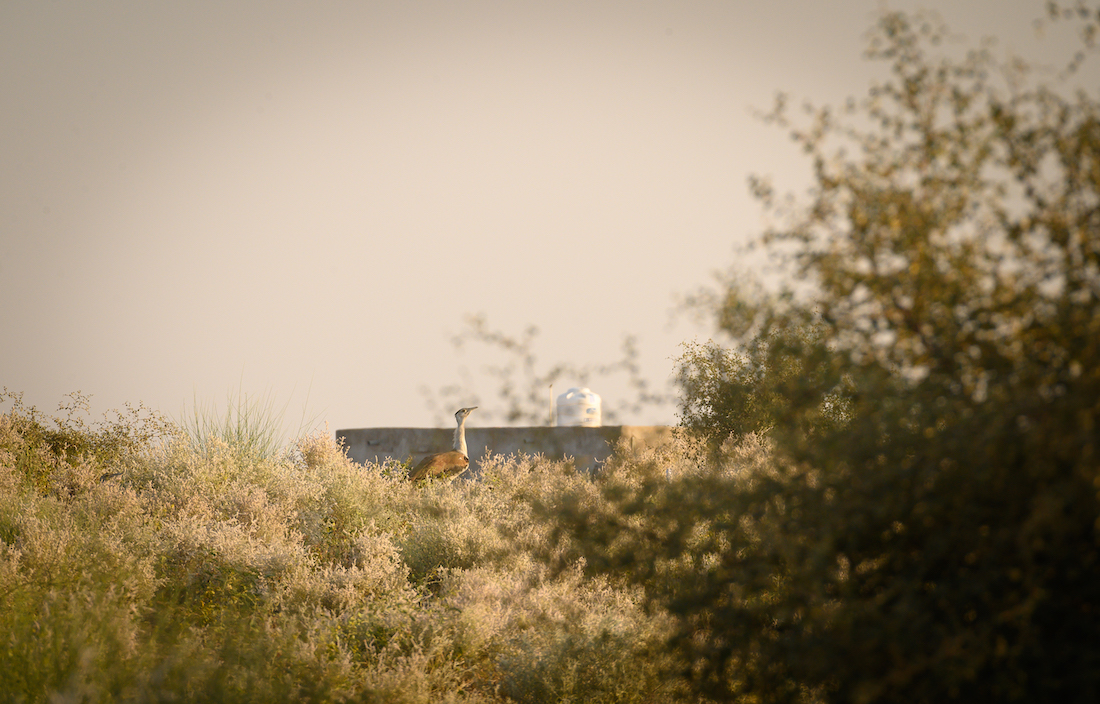
Soon after, it started foraging for food and found a dung beetle or gobrilla, which it quickly picked up with its stout beak and swallowed. It continued to feast, unaware of our presence. But then, a loud sound startled us and the bird. It was a pataat, a barrel-like instrument the local farmers use to just scare away birds and other animals, as hunting in this Bishnoi-dominated landscape is unusual, given the fierce protection this community offers to animals and plants. “The farmers must be scattering the sparrows feasting upon their bajra,” said Pankaj. The bustard recomposed itself and resumed foraging, but not for long. Another blast of the pataat made it take flight, leaving us behind.
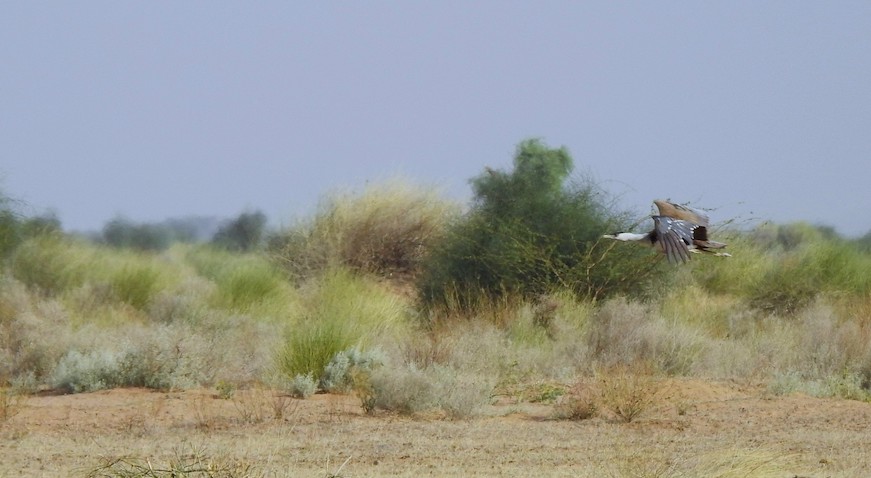
We decided to return to our field base to refresh ourselves. Post breakfast, we left our base to survey the study area, a 35-hectare fenced-off private land serving as a reserve for the GIB. This reserve is a mosaic of fallow, farm, and revenue land, lacking any permanent human settlement in the periphery of six km. BNHS has permission from the landowners to conduct research here. The godawan intensively uses this landscape to rear its young for four to five months from late October. We patrolled along the six-and-a-half-foot fence, looking for signs of damage or intrusion. We soon discovered a trench dug under the fence in a sandy area. Pankaj spotted the culprits – a group of wild boar with litter wallowing near a water body. We noted our observations for the day and, with the mercury rising, retreated to the base.
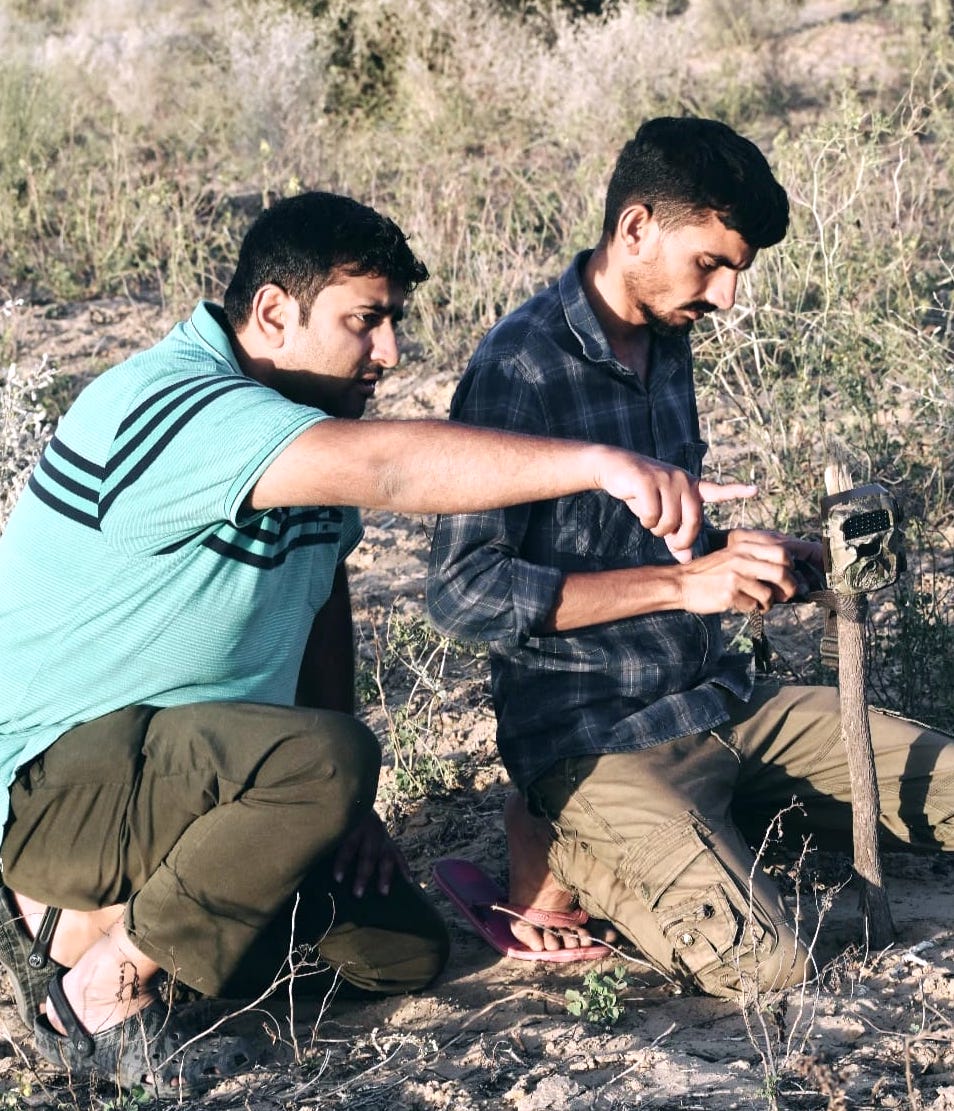
Our afternoons are often spent visiting the nearest village, Khetolai, to get water, groceries, and other supplies. The village is famous for being the site of peaceful nuclear tests conducted by the Government of India in 1974 and 1998. We also recharge our equipment and batteries during this time, collate data, and rejuvenate ourselves. The wildlife, too, goes into rest mode, taking shelter in the vegetation to avoid the scorching heat. By 4:00 p.m., the temperature begins to dip, and we head back to the field.
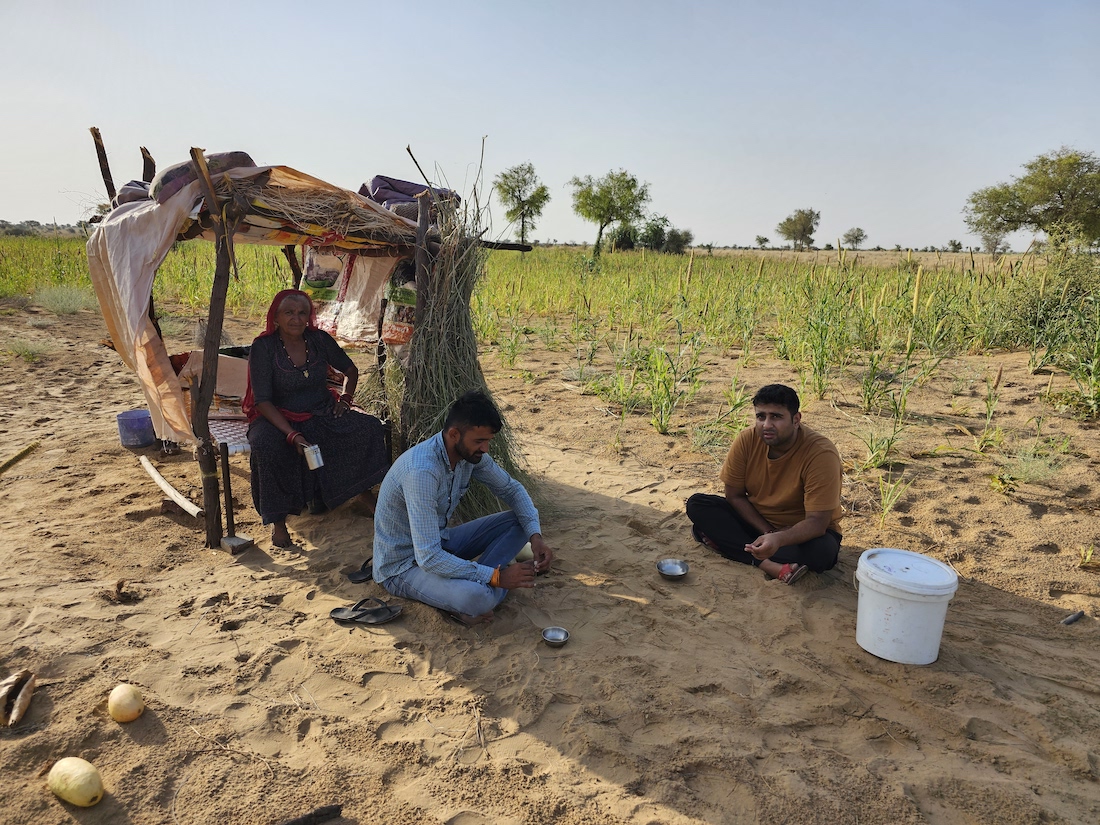
Today, a distress call from Radheshyam Bishnoi, a local conservationist, took us to the spot where a chinkara lay dead from wounds inflicted by feral dogs. Feral dog attacks on wildlife is a major conservation issue in the area. According to our estimates, these dogs kill around seven to eight chinkaras a month. We have tried to help by translocating over 200 dogs in the area with the aid of vets and other experts, but more needs to be done. Radheshyam also told us of a female GIB and her chick that were chased by a pack of feral dogs. However, since it was time for the sun to set and to avoid night travel in this pristine habitat, we returned to our base with a heavy heart.
On our way back, we met with a stroke of luck. We spotted an elusive desert cat, the apex predator of this arid ecosystem. Its glowing eyes were stalking something. We switched off the engine of our car and lay still. After a few minutes, we witnessed the cat catch a Sindh sand rat and disappear into the grassland with its precious catch. It was a rare moment indeed!
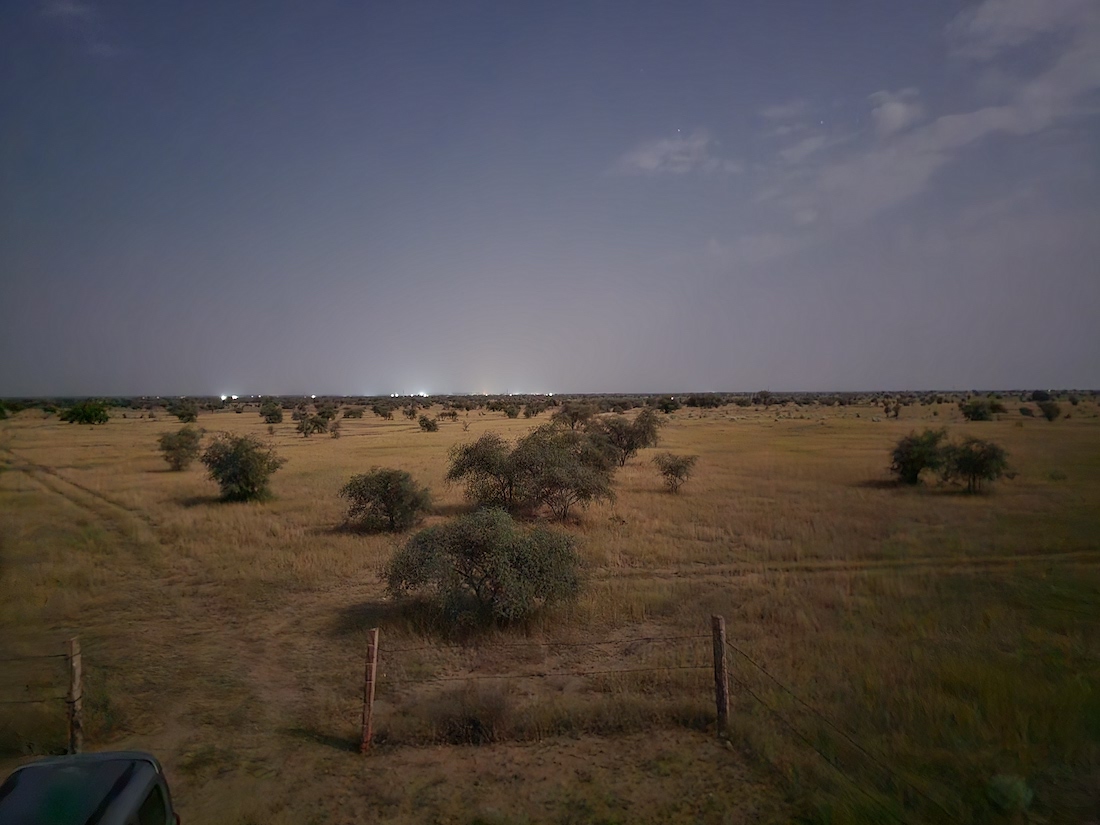
Returning to the base, we had an early dinner, and as we cleaned up the kitchen, we heard a noise in the backyard. It was a desert fox looking for something to eat. We ended the day looking at the clear sky dotted with stars above us and wondering how we could best protect all the magnificent creatures we had seen today from the many existing threats to their survival. To find the answers, we needed to rest our minds and get ready for yet another exciting day ahead.
About The Author
After completing his Bachelor of Dental Surgery from the Rajasthan University of Health Sciences, Dr. Neelkanth Bora enrolled for the Leadership Course in Biodiversity Conservation at BNHS. His intense passion for wildlife and nature conservation triggered him to leave the conventional medical field to pursue his future career growth in conservation with the help of BNHS. Today, he is a BNHS Programme Officer assigned to the Project Great Indian Bustard in the Thar Landscape of Rajasthan. He focuses on leveraging community involvement to create skilled youth for sustainable conservation. His work also concentrates on studying the impact of exotic species and land use changes from renewable energy projects in the Thar landscape. This area is home to the critically endangered Great Indian Bustard and other threatened species.

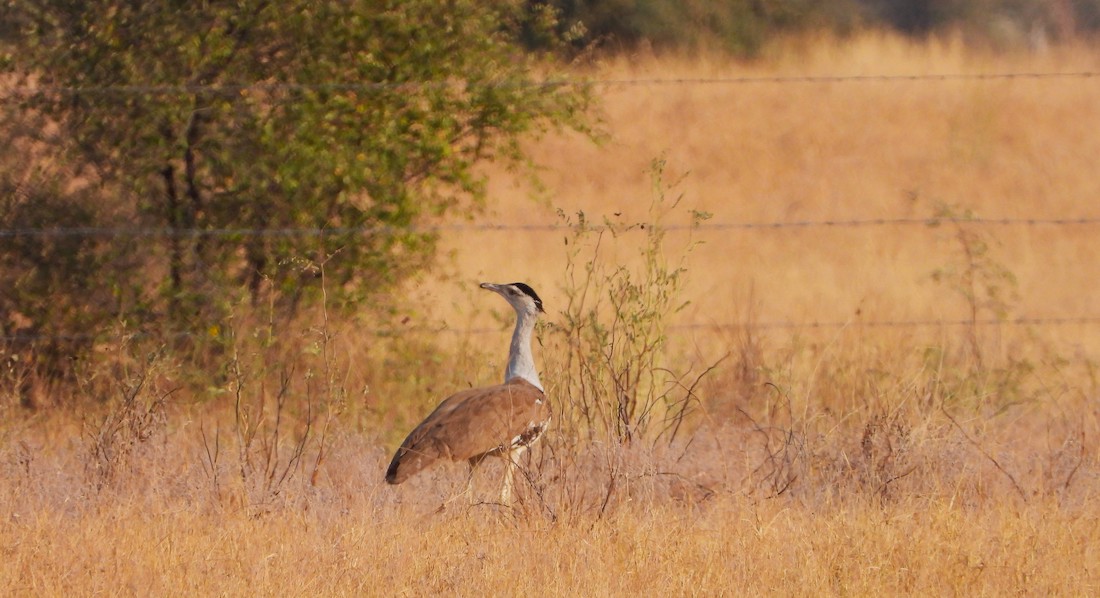
Thanks for this article and for your work. I visited the Thar in 2022 and spotted two GIB. I am working on a short narrative about the excursion and wonder if someone from BNHS can help with a few basic questions. Thank you.